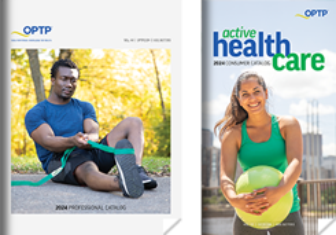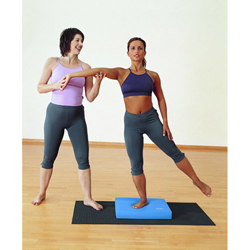Our hands allow us to do everything from completing routine tasks to creating unique masterpieces. Unfortunately, many of us use our hands too much and the rest of our bodies too little. Repeated reliance on our hands for work and daily living often progresses toward overuse of our upper extremity muscles and joints.
Also problematic is our tendency to use one hand more than the other. And with so many everyday activities — computer use, texting, reading, driving, cooking — our hands are positioned out in front of our bodies, leading to postural stresses and muscle imbalances.
Awareness and Movement
Caring for hands requires moving your whole body in many ways — reaching, pushing, pulling, and climbing — actively exploring full end-range movements of your hips, spine, shoulders, arms and hands.
Awareness of body positioning is also essential in caring for our hands. Any task that requires standing or sitting in one position for long hours can wreak havoc on posture. Ease the stress by increasing the variety of your movements and changing your position every 15–20 minutes. Nurture your hands with frequent movement breaks and keep your wrists neutral when using any equipment, limiting forceful pinching, gripping and holding.
One way we can be more aware of our positioning is to invite playful exploration into our daily routines. Spending a few minutes each day rolling with small bright-green balls called Small Health Balls™ is a great way to do this. These miniature massage therapy balls are designed to direct concentrated pressure to areas of tightness in our muscles and fascial tissues that are a result of poor posture, inflammation, or trauma.
The practice of ball rolling helps us notice our capabilities and imbalances, observe our movement patterns and postural habits, experience alignment and support, and connect our body and mind. Spontaneous rolling and releasing can restore and create healthful, efficient, and balanced movement and function.
Finding the “Green Zone”
During ball rolling, the release of tightness and tension from our muscles and connective tissues often corresponds with a release of emotional stress and tension. Neuropsychologist Rick Hanson, PhD describes this responsive mode of the brain as the “green” zone. It is characterized by activation of the parasympathetic nervous system, with the body settling down, calming, repairing, refueling, and evoking feelings of gratitude, contentment, and kindness.
In contrast, the reactive mode is known as the “red” zone and defines the fight-or-flight sympathetic nervous system activation known for fear, intensity, possessiveness, and aggression. Although both brain modes are natural and necessary, our everyday wellbeing and long-term health benefit from leaving “red” and centering in “green” as often as possible.
Rolling with Small Health Balls helps discover physical barriers, welcoming “playing through” rather than “working through” difficulties, and leads to discovery of other barriers, including blockages in our thinking and feeling. As we invite the beneficial changes of softening and relaxing into our bodies, our minds and emotions follow.
Getting Rolling
Include ball rolling and self-massage techniques throughout each day to counteract some of the repetitive movements and poor postural habits associated with daily tasks. Here are a few movements selected from my latest book, Ball Rolling for Happy, Healthy Hands, to begin exploring self-care techniques for your hands, arms, shoulders and neck. Remember to breathe deeply and fully, releasing tightness and tension during every exhalation. Choose the amount of pressure that feels best for you, while staying mindful of your body posture and positioning.

 | Top of Shoulder Roll & Release Benefits: Releases tightness and tension; improves posture; enhances neck and shoulder mobility
|
| Outer Forearm Roll & Release Benefits: Releases tightness and tension; improves elbow, forearm and wrist mobility; enhances arm function
|  |
 | Thumb Roll & Release Benefits: Releases tightness and tension; improves hand mobility and function
|
| Knuckle Decompress Benefits: Releases tightness and tension; improves hand mobility and function
|  |
About the Author
Angela Kneale, OTD, MA, OTR/L, NBC-HWC, is an occupational therapist, integrative health coach, Franklin Method® educator, and certified Stott Pilates® instructor. Her professional experience includes industrial rehabilitation, employee wellness, and care for individuals with chronic pain, physical disabilities, and neurological issues. The author of eight books including the recently released Ball Rolling for Happy, Healthy Hands, Angela specializes in the integration of movement, breathing, postural alignment, and relaxation techniques for optimal health and wellbeing. Learn more at EmbodyHealthWellnessLife.com.







